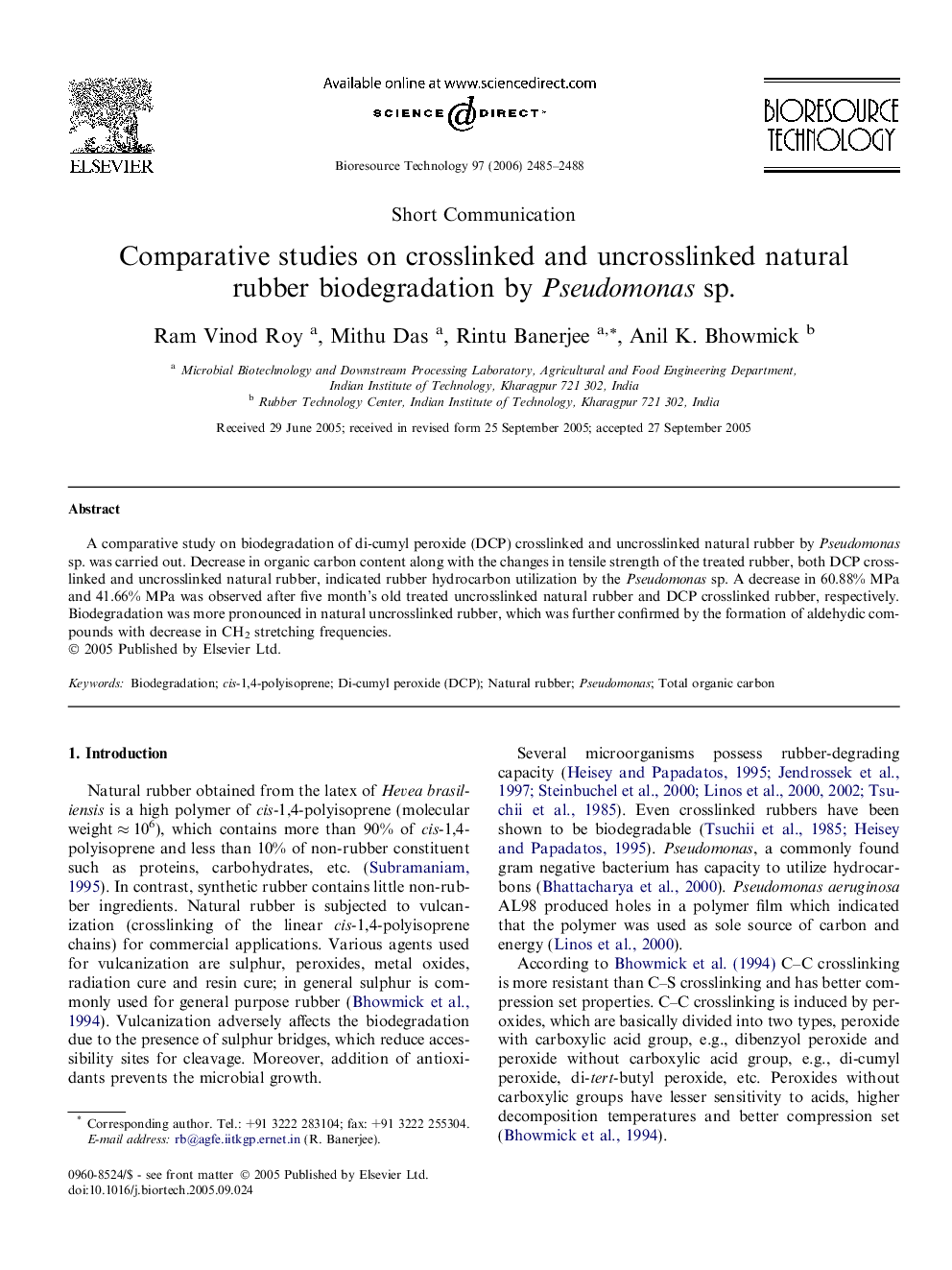| Article ID | Journal | Published Year | Pages | File Type |
|---|---|---|---|---|
| 685971 | Bioresource Technology | 2006 | 4 Pages |
Abstract
A comparative study on biodegradation of di-cumyl peroxide (DCP) crosslinked and uncrosslinked natural rubber by Pseudomonas sp. was carried out. Decrease in organic carbon content along with the changes in tensile strength of the treated rubber, both DCP crosslinked and uncrosslinked natural rubber, indicated rubber hydrocarbon utilization by the Pseudomonas sp. A decrease in 60.88% MPa and 41.66% MPa was observed after five month’s old treated uncrosslinked natural rubber and DCP crosslinked rubber, respectively. Biodegradation was more pronounced in natural uncrosslinked rubber, which was further confirmed by the formation of aldehydic compounds with decrease in CH2 stretching frequencies.
Related Topics
Physical Sciences and Engineering
Chemical Engineering
Process Chemistry and Technology
Authors
Ram Vinod Roy, Mithu Das, Rintu Banerjee, Anil K. Bhowmick,
